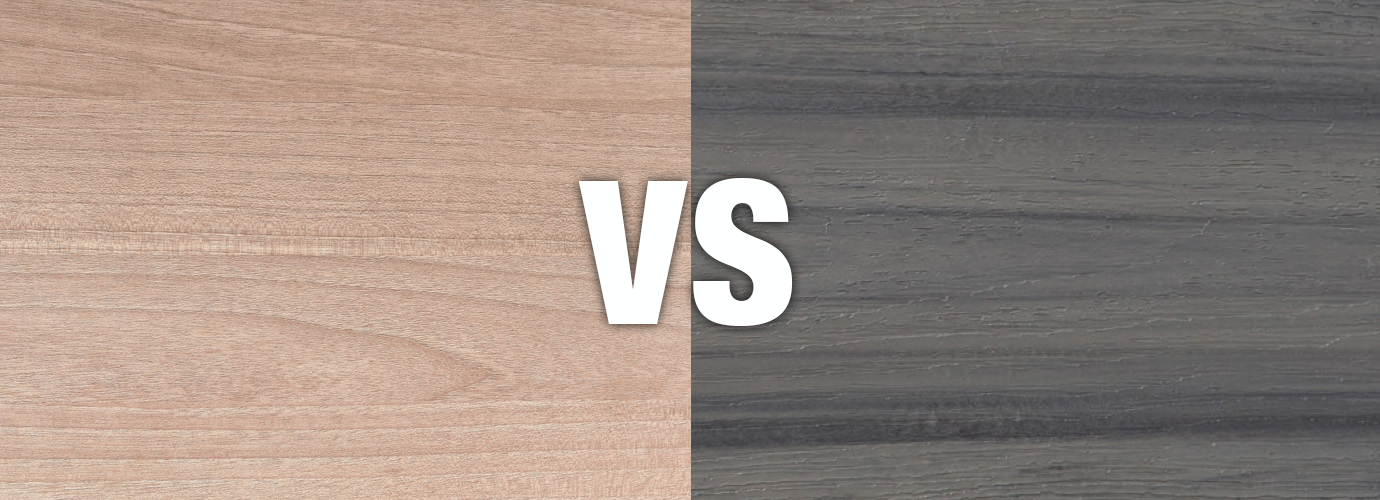
DESIGNED for BEAUTY.
MADE for LIFE.
Blog & News
Which is better: composite decking or wood decking?

Decks are a great way to increase the value of your home, and they also provide a nice outdoor space that you can use for entertaining. But if you’re thinking about building or buying a deck, there’s one major decision that needs to be made: a wood deck or a composite deck? Let’s take a look at some of the pros and cons of both options before making your final decision.
What do we mean by wood decking?
There are many different kinds of wood, but if you walk into your local lumber yard (or Lowe’s or Home Depot) looking for decking, you’re probably going to be choosing between pressure-treated southern pine or western red cedar. With pressure-treated lumber, chemicals are forced into the wood under tremendous pressure. These chemicals protect the wood from insects and decay. (They also make it much heavier than a regular pine board of the same dimensions. Western red cedar is known for its natural resistance to decay and insect attacks. Ipe hardwood is even more durable — and even more expensive.
What do we mean by composite decking?
Several manufacturers produce composite decking. The best-known brand is probably Trex, but TimberTech and Fiberon are also well-known. All composite decking manufacturers, including Armadillo, use a similar process and similar components. Recycled plastic is mixed with wood particles (like very fine sawdust) and shaped into boards that are “wrapped” in a tough plastic shell. They are colored and textured to look and feel like stained wood, without the downsides, such as decay, insects, and splinters.
Which costs less?
Generally, pressure-treated softwood lumber costs less than a comparable board made of western cedar or composite. For example, a 12-foot pressure-treated board costs between $15 and $20. A 12-foot cedar board is $40 to $50, and a 12-foot composite board will cost between $25 and $60, depending on the product and manufacturer. However, with wood, you have other costs for staining and sealing. Between the material costs and the labor required, wood decking becomes less of a bargain. Unfortunately, those are recurring costs: every year or two, you will need to re-stain and re-seal. Over time, composite decking is usually less expensive.
Winner: composite decking
Which looks better?
Appearance is subjective. Wood decking sometimes has small knots or imperfections, while composite decking is more uniform. Most mid-to-high-end composite decking is very similar in color and texture to stained wood, and it can be hard to tell the difference.
Winner: tie
Which lasts longer?
Wood warps, rots, and splits. Also, insects and various rodents eat it. If it’s not maintained correctly and gets a lot of sun, it can produce horrifically large splinters. Most wood decks last about ten years, 15 if you’re lucky and diligent about maintenance. Composite decking often has a lifetime warranty and regularly lasts for 25 years or more. While composite decking resists rotting, splitting, and warping, it does fade in the sun over time.
Winner: composite decking
Which is easier to maintain?
There’s no question here: composite decking requires far less maintenance than wood decking. A quick wash-down once or twice a year is all it needs — and it’s a breeze if you have a pressure washer. (If you have a house, you need a pressure washer. It’s the most wonderful cleaning tool since the loofah.) Wood decking needs to be washed too, but it often needs to be sanded, stained, and sealed. With composite decking, you’ll spend more of your time enjoying your deck, not maintaining it.
Winner: composite decking
Overall winner: composite decking
Yes, we’re a composite decking company. But talk to any builder or contractor, and they’ll tell you the same thing. While wood might cost less initially, it requires more maintenance — which means recurring material costs and recurring labor. Composite decking costs a bit more initially, but it requires far less time and money to maintain.
| Wood decking | Composite decking | |
| Cost (initial) | ★ | |
| Cost (long-term) | ★ | |
| Appearance | ★ | ★ |
| Durability | ★ | |
| Maintenance | ★ | |
| Bottom line | Lower initial cost but costly and difficult to maintain | Higher initial cost, inexpensive and simple to maintain |
How many boards do you need?
It’s easy to know with our new Materials Calculator!
